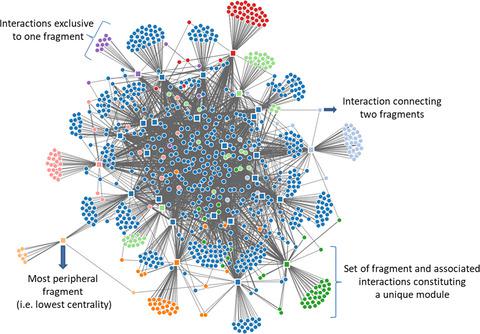当前位置:
X-MOL 学术
›
Ecol. Lett.
›
论文详情
Our official English website, www.x-mol.net, welcomes your feedback! (Note: you will need to create a separate account there.)
A plant–pollinator metanetwork along a habitat fragmentation gradient
Ecology Letters ( IF 8.8 ) Pub Date : 2021-10-06 , DOI: 10.1111/ele.13892 Felipe Librán-Embid 1, 2 , Ingo Grass 3 , Carine Emer 4, 5 , Cristina Ganuza 6 , Teja Tscharntke 1
Ecology Letters ( IF 8.8 ) Pub Date : 2021-10-06 , DOI: 10.1111/ele.13892 Felipe Librán-Embid 1, 2 , Ingo Grass 3 , Carine Emer 4, 5 , Cristina Ganuza 6 , Teja Tscharntke 1
Affiliation

|
To understand how plant–pollinator interactions respond to habitat fragmentation, we need novel approaches that can capture properties that emerge at broad scales, where multiple communities engage in metanetworks. Here we studied plant–pollinator interactions over 2 years on 29 calcareous grassland fragments selected along independent gradients of habitat size and surrounding landscape diversity of cover types. We associated network centrality of plant–pollinator interactions and grassland fragments with their ecological and landscape traits, respectively. Interactions involving habitat specialist plants and large-bodied pollinators were the most central, implying that species with these traits form the metanetwork core. Large fragments embedded in landscapes with high land cover diversity exhibited the highest centrality; however, small fragments harboured many unique interactions not found on larger fragments. Intensively managed landscapes have reached a point in which all remaining fragments matter, meaning that losing any further areas may vanish unique interactions with unknown consequences for ecosystem functioning.
中文翻译:

沿栖息地破碎化梯度的植物传粉者元网络
为了了解植物 - 传粉者的相互作用如何对栖息地破碎化做出反应,我们需要新的方法来捕捉在多个社区参与元网络的大范围内出现的特性。在这里,我们研究了超过 2 年的植物 - 传粉媒介相互作用,研究了 29 个钙质草地碎片,这些草地碎片是沿着栖息地大小的独立梯度和覆盖类型的周围景观多样性选择的。我们分别将植物-传粉媒介相互作用和草地碎片的网络中心性与其生态和景观特征联系起来。涉及栖息地专业植物和大型传粉者的相互作用是最核心的,这意味着具有这些特征的物种形成了元网络核心。嵌入在具有高土地覆盖多样性的景观中的大片段表现出最高的中心性;然而,小片段包含许多在大片段上没有的独特相互作用。集约化管理的景观已经到了所有剩余碎片都很重要的地步,这意味着失去任何进一步的区域可能会消失独特的相互作用,对生态系统功能产生未知的后果。
更新日期:2021-11-11
中文翻译:

沿栖息地破碎化梯度的植物传粉者元网络
为了了解植物 - 传粉者的相互作用如何对栖息地破碎化做出反应,我们需要新的方法来捕捉在多个社区参与元网络的大范围内出现的特性。在这里,我们研究了超过 2 年的植物 - 传粉媒介相互作用,研究了 29 个钙质草地碎片,这些草地碎片是沿着栖息地大小的独立梯度和覆盖类型的周围景观多样性选择的。我们分别将植物-传粉媒介相互作用和草地碎片的网络中心性与其生态和景观特征联系起来。涉及栖息地专业植物和大型传粉者的相互作用是最核心的,这意味着具有这些特征的物种形成了元网络核心。嵌入在具有高土地覆盖多样性的景观中的大片段表现出最高的中心性;然而,小片段包含许多在大片段上没有的独特相互作用。集约化管理的景观已经到了所有剩余碎片都很重要的地步,这意味着失去任何进一步的区域可能会消失独特的相互作用,对生态系统功能产生未知的后果。



























 京公网安备 11010802027423号
京公网安备 11010802027423号